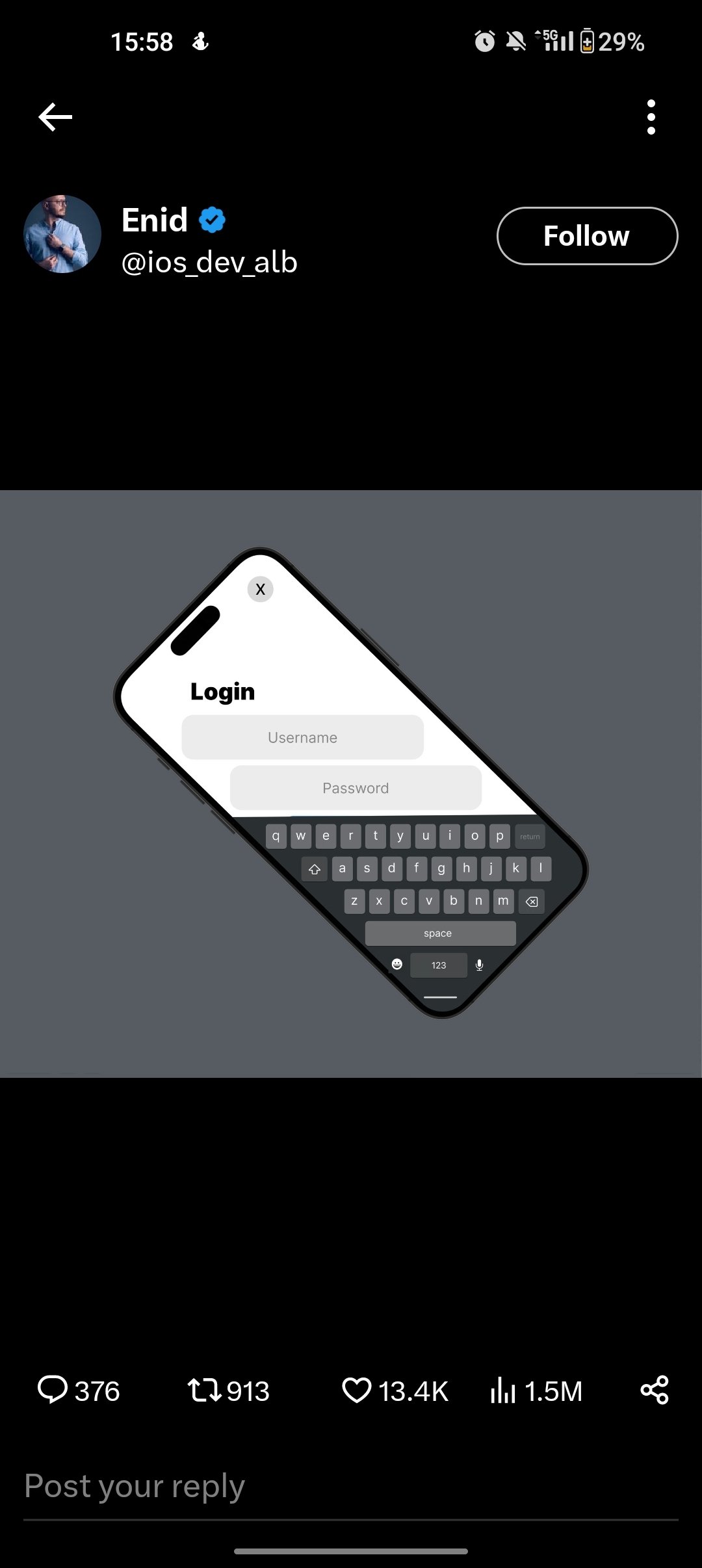Alt text:
Twitter post by Daniel Feldman (@d_feldman): Linux is the only major operating system to support diagonal mode (credit [Twitter] @xssfox). Image shows an untrawide monitor rotated about 45 degrees, with a horizontal IDE window taking up a bottom triangle. A web browser and settings menu above it are organized creating a window shape almost like a stepped pyramid.
Edit: alt text
Another funny concept

Hmm yes, web dev horrors beyond my comprehension!
That, right there, is a perfect example of why folks need to stop trying to shoehorn web apps everywhere they don’t belong. It’s a use-case for a proper native mobile app if ever there was one.
even if it’s just mobile
you already have to handle landscape/portrait mode
now imagine having to handle angled
That’s why you should’ve just handled arbitrary rotations instead of inventing a finite predefined set of orientation “modes” in the first place.
Things get a lot easier in the long run if you aggressively look for commonalities and genericize the code that handles them instead of writing bunches of one-off special cases.
And this is why my webapp only renders properly on circular displays.
That’s called over-engineering for use cases that don’t and won’t exist. Please lecture us some more though.
true
however
everything would be fluid in the layout and you would need to set what should go on top of what. And having this feature doesn’t seem worth the hassle of making if work, or even using it.
Imagine trying to type in a ‘fluid’ keyboard
TBH tho, seems like a cool gimmick for some apps.
Yeah, but I don’t want to have an app on my phone for a store I go to once. I don’t give a fuck if the page is ugly.
That just means it shouldn’t be a native app or a web app, but instead should be a plain ol’ webpage that doesn’t try to do app-y things in the first place. The notion that web pages have any legitimate reason to know your viewport size (let alone anything at all about the screen hardware itself) is like one of those “statements dreamed up by the utterly deranged” memes, except not satirical.
Seriously: literally the entire defining principle of HTML (well, aside from the concept of “hyperlinks”) is that the client has the freedom to decide how the page should be rendered, but misguided – or megalomaniacal –
graphic designerswebmastersfront-end web “devs” have been trying to break it ever since.Lol - in your other comment you suggested that web devs key off of screen rotation to resize the page, but now you’re saying the client shouldn’t know anything about the viewport at all? Which is it? And why would the rotation angle be useful if I don’t know the aspect ratio of the screen? Or are we now assuming that widescreen will be a thing forever? I thought your ingenius idea was to be able to handle any use case.
Lol - in your other comment you suggested that web devs key off of screen rotation to resize the page, but now you’re saying the client shouldn’t know anything about the viewport at all? Which is it?
Legitimate apps key off screen rotation do fancy stuff. Web pages let the browser render them and don’t try to do fancy stuff. It’s not that fucking hard.
Why does this low key feel like something I would actually want to use
Linux is the only major operating system
to support diagonal modeI’d just like to interject for a moment. What you’re refering to as Linux, is in fact, GNU/Linux, or as I’ve recently taken to calling it, GNU plus Linux. Linux is not an operating system unto itself, but rather another free component of a fully functioning GNU system made useful by the GNU corelibs, shell utilities and vital system components comprising a full OS as defined by POSIX.
Many computer users run a modified version of the GNU system every day, without realizing it. Through a peculiar turn of events, the version of GNU which is widely used today is often called Linux, and many of its users are not aware that it is basically the GNU system, developed by the GNU Project.
There really is a Linux, and these people are using it, but it is just a part of the system they use. Linux is the kernel: the program in the system that allocates the machine’s resources to the other programs that you run. The kernel is an essential part of an operating system, but useless by itself; it can only function in the context of a complete operating system. Linux is normally used in combination with the GNU operating system: the whole system is basically GNU with Linux added, or GNU/Linux. All the so-called Linux distributions are really distributions of GNU/Linux!
BRB, sticking microcontrollers to the back of my monitors so I can use their accelerometers to report the orientations in real time…
I would love it so much if xrandr was able to keep up with that and didn’t blink for 3 seconds every time you changed orientation

Embrace the power of the pyramid.
They put touchscreens on doorstops now? /s
Java truly runs on everything.



